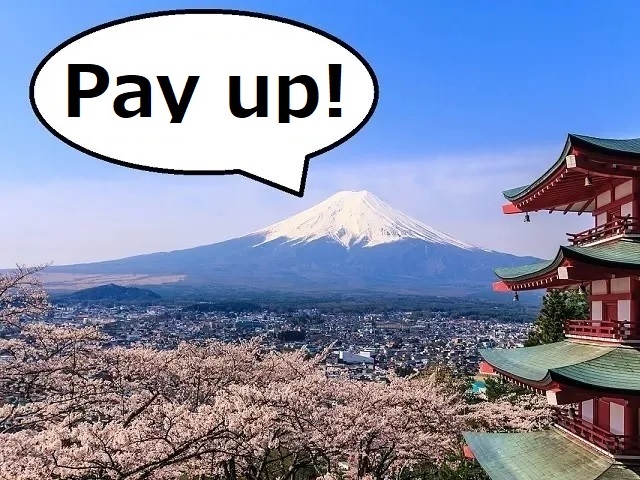Toll fees officially added to Mt. Fuji hiking trail

Required fees will be in place by the start of hiking season, and probably won’t be the only thing you’ll need to pay for to see the sunrise from the summit.
Though Mt. Fuji has been one of the most iconic symbols of Japan for generations, the mountain has seen a surging rise in its number of visitors in recent years. Between increased interest in outdoor activities among domestic sightseers and the boom in inbound international travel to Japan, Mt Fuji is a more popular destination than ever, but it’s about to become a more expensive one too.
Earlier this year, the government of Yamanashi, the Prefecture which includes the Yoshida Trail, the most accessible and common route to the top of Mt. Fuji, said it was considering adding a required toll to the trail. on Monday, the prefectural assembly put the idea to a vote, and it was unanimously approved.
Under the new rules, hikers wishing to progress past the Fifth Station on the Yoshida Trail (approximately half-way up the mountain), will have to pay a toll of 2,000 yen (US$13.60). This is a per-person, not per-group, toll. The new ordinance doesn’t start until July 1. However, the upper sections of Mt. Fuji are closed to hiking during the fall, winter, and spring, so essentially the Yoshida Trail toll is already in effect, in the sense that there’s no way to officially hike the affected section before tolls start being collected.
▼ The Yamanashi prefectural assembly, voting on the Mt. Fuji trial toll
To ensure compliance, a gate will be set up at the Fifth Station. This gate will be closed between 4 p.m. and 3 a.m., and while those dusk-to-dawn hours may not comprise a core hiking time on most trails, Mt. Fuji is an exception. Shortly before sunrise is widely considered the ideal time to arrive at the peak of Mt. Fuji, in order to see the breathtaking phenomenon of the morning sun rising through the sea of clouds that regularly circles the summit. To time this, some people hike through the night, passing by the fifth station after sundown, and then hike back home directly from the summit.
The gate closure hours were specifically chosen to prevent this itinerary, which is called dangan tozan, or “bullet climbing.” Passing through the Fifth Station before 4 p.m. and heading straight to the peak will get you there too early to see the sunrise, and passing through at 3 a.m. means you’ll be too late. Instead, the Yamanashi government would like you to spend the night in, and spend money on, lodging in one of the mountain huts on Mt. Fuji between the Fifth Station and the peak so that you can reach the top right as the sun is coming up. Prices for huts vary by location and specific day, but often start at around 5,000 yen per person, and unless you want to stand around for hours on the mountain in the middle of the night, such lodging fees are going to be an unavoidable expense of visiting the peak at sunrise.
Japan’s hiking trails are usually free to use, and with Mt. Fuji being Yamanashi’s best-known tourism attraction, collecting tolls from hikers stands to be a sizable revenue boost for the prefectural government. However, the plan isn’t just a simple ploy to fill the prefecture’s coffers. With Mt. Fuji visitor numbers surging following the end of pandemic protocols, there are increased concerns of environmental impact and crowd control issues on the mountain. Officials also assert that “bullet climbing” can be dangerous due to the mixture of cold temperatures and poor visibility at night, plus the mental and physical fatigue of hiking up Japan’s tallest mountain at a time when the body is conditioned to usually be asleep. As further proof that this is more than just a cash grab, along with the toll an admission cap will go into effect this summer, with a daily limit of 4,000 people who can pas through the Fifth Station gate.
The 2,000-yen toll will be in addition to the 1,000-yen requested (but not required) donation that hikers on the Yoshida Trail are already asked for. When the idea for the toll plan was first announced, there was talk of waiving the 2,000-yen toll for hikers who are staying in a mountain hut, but it’s currently unclear whether this concession has made it into the final version of the ordinance.
Though Yoshida is the most common route to the top of Fuji, there are a total of four trails that lead up the mountain. Odds are that local governments will be watching reactions to the toll closely, though, and we may see such systems spread to the other trails as well.
Source: FNN Prime Online via Hachima Kiko, NHK News Web
Top image: Wikipedia/Gryffindor (edited by SoraNews24)
● Want to hear about SoraNews24’s latest articles as soon as they’re published? Follow us on Facebook and Twitter!
Credit:

0 comments: